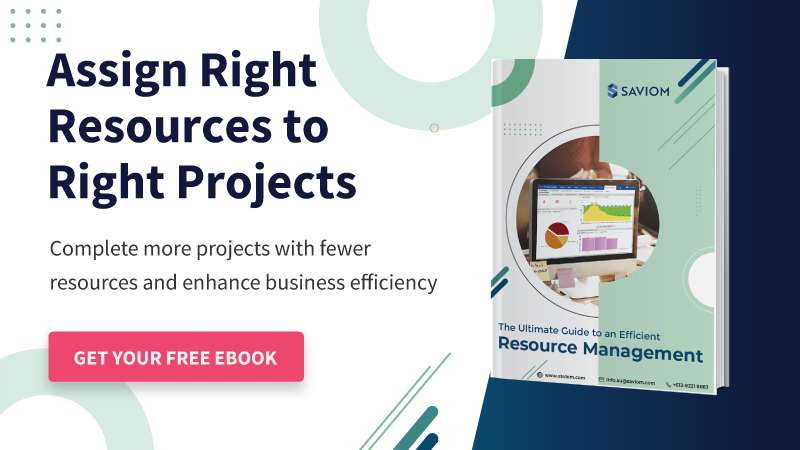Workplace stress is one of the major afflicting factors that’s deteriorating the lives of employees across the world. According to a survey of more than 2,000 full-time U.S. employees,
“More than half of employees find themselves stressed during at least 60 percent of the workweek.”
Excess stress can elevate health issues such as headaches, increased blood pressure, chest pain, etc. Moreover, it also gives rise to psychological disorders like anxiety and depression. All these factors can lower employee productivity, engagement, increase burnout, etc. Thus, it is necessary to take necessary measures to alleviate stress levels and create a conducive work environment.
In this blog, we shall cover the factors that cause job stress and how you can eliminate it and improve employee productivity.
But first, let’s start with the basics.
What is work stress?
Work stress can be defined as the harmful physical and emotional effects on employees caused due to their jobs. According to a CDC report,
“40% of workers reported their job was extremely stressful and 25% view their jobs as the number one stressor in their lives.”
While every job has an element of stress, excessive work stress can be detrimental for the employees. Many employees believe that stress is a silent killer and it gradually diminishes their emotional, mental and physical well-being. It drains out their energy, minimizes their focus, reduces productivity, and also affects their personality.
Apart from the employees, this work stress can also harm the company. Some of the ill effects are:
- Deterioration of quality of work.
- Increase in turnovers.
- Poor staff relationships.
- Frequent absenteeism.
So, why does work stress generally occur?
Causes behind work stress
There are various reasons which may lead to work stress. Some of the most common ones are:
Work overload
Work overload is the most prominent cause of stress in the workplace. Due to present industry trends and increasing job demands, employees are under constant work pressure. Superiors expect them to complete a large amount of work in a short time or give them unrealistic and overambitious deadlines. Excessive workloads hamper their work-life balance and lead to physical and mental problems, etc.
As per Statista,
“39% of employees say heavy workload is their main cause of stress.”
Management style
The management style of managers also puts stress on the employees. For example, some autocratic managers give very little freedom to the employees in decision-making and planning. Micromanagement and lack of autonomy can create unnecessary work pressure and a feeling of depreciation. Additionally, complete autonomy can also lead to distress as employees lack direction and support to get the job done.
Unfair treatment at the workplace
Sometimes, employers may deliberately or even unknowingly mistreat employees. One of the most common examples is overlooking someone for promotion because of a biased mentality. Many times, these discriminations may be based on age, gender, ethnicity, favoritism, etc. All these factors can lead to decreased morale, lowered performance, and other issues.
Role ambiguity
Role ambiguity occurs when employees’ responsibilities do not match with their skillset. For example, it may happen due to unclear job descriptions or a lack of communication with the manager. Like every stressor, role ambiguity may affect someone’s performance and even compel them to leave the organization.
Non-conducive work environment
The work environment plays a significant role in either reducing or increasing work stress. For instance, a hostile workplace where there is discrimination, politics, etc., can further put pressure on the employees. As per a survey by Randstad,
“38% of employees want to leave their current jobs because of a toxic work environment.”
In addition to the causes mentioned, several other factors increase job stress. Some of which are job insecurity, lack of growth opportunities, organizational changes, etc.
Now that the causes behind stress are clear, let’s understand how organizations can minimize work stress and keep their employees happy and productive.
Ways to eliminate stress and improve productivity
Here is a detailed description of the ways employers may follow to reduce employee work stress:
Determine the causes of stress
To better manage your employees’ stress, you need to find out the underlying cause of the distress. As mentioned earlier, these stressors can be a heavy workload, poor work-life balance, salary, personal reasons, or work atmosphere. You may take notes of everything at the workplace and find out the main reason behind their stress. Moreover, you can conduct feedback sessions, one-on-one meetings, etc., to understand what’s leading to escalated stress levels.
For instance, if your employees complain about a heavy workload, you should find ways to optimize their work schedules. That way, their work-life balance won’t be affected, and they will remain productive.
Foster Diversity, Equity, and Inclusion (DE&I)
Workplace discrimination can be one of the significant factors behind stress. As per a report by Black Dog Institute,
“LGBTI individuals have twice the rate of mental health diagnoses. In addition, they’re five times more likely to have suicidal thoughts compared to their heterosexual peers.”
Fostering a diverse and inclusive workplace can minimize these employees’ psychological distress. An inclusive environment allows individuals to bring their authentic selves to work. It also helps in bringing multiple perspectives to the table, quick problem solving, etc. Moreover, embracing diverse and inclusive values leads to higher employee satisfaction. Finally, it results in improved productivity and profitability.
Develop flexible work schedules
Every employee has some personal obligations. For instance, they may have to take care of their elderly parents, drop their children at schools, and so on. But sometimes, with rigid schedules, it gets difficult to fulfill these duties. Let’s consider the example of a night-shift employee.
Continuously working in night shifts can cause distress as the circadian rhythm, which regulates the ‘sleep-wake cycle’, would be disturbed. However, flexible schedules such as rotational shifts can cater to their health and maintain a synergy. Moreover, with a happier personal life, they can be more productive at work.
Offer breaks and paid time offs
When employees don’t get timely breaks or leaves, they reach a threshold and feel work fatigue. It hampers their mental health and even puts a lot of strain on their body, eventually leading to burnout.
Thus as an employer, you must provide them with necessary breaks and paid leaves. Having these facilities will help employees to rejuvenate and take some time off from the monotonous work schedule. In addition, when employees return from breaks or leaves, they are more engaged and focused at work.
Provide training and development
The disparity between a person’s competencies and the job requirements can be a factor behind stress. But you can minimize this stress with proper training and development. An adequately trained employee will have the confidence and ability they need to do their job well.
For example, you may ask experienced employees to train junior employees, known as ‘shadowing.’ It will help improve morale and help develop collaboration between different members. If possible, you may even provide access to internal training and orientation or even offer to fund their correspondence courses.
Formulate staff recognition programs
Everybody loves getting appreciated for the work that they are putting in. It boosts their engagement, morale, and their zeal to provide more for the company. Thus, formal or informal rewards and recognition programs are among the best possible ways to enhance engagement and improve productivity. When employees are more engaged and driven at the workplace, it automatically reduces their stress levels.
There are various ways to recognize employees. For instance, you may organize monthly or yearly recognition programs. Or, you may even send appreciation emails to employees for their hard work. Most importantly, all these programs will make your employees happier and more comfortable in the workplace. It will also help in motivating them and keeping them focused.
Organize team-building activities
Team-building activities help your workforce to adapt to work culture quickly. Activities such as group discussions, online meetings, brainstorming, casual meetup, etc., empower the team with positive reinforcement and make them feel valued. It also aids in developing mutual respect amongst employees and eliminates internal conflicts.
According to Gallup’s research,
“Team-building exercises lead to an increase in employee performance rate, claiming 41% lower absenteeism and 21% higher profitability.”
Moreover, activities such as office outings, picnics, dinner parties, etc., help employees collaborate better. It helps create a friendly workplace culture. All these actions relieve employees of stress and help them get more productive at work.
How can Resource Management help reduce workplace stress?
When a less experienced resource is given a high-priority task, he will need extra time to complete it. Moreover, he may need training and guidance from seniors. Therefore, it may hamper his performance and put a lot of stress on him as he will be under the constant pressure of delivering the best results.
On the other hand, if a highly skilled resource is scheduled for a low-priority task, it may also be detrimental. The employee may feel berated as his experience and skills are not getting recognized. It may lead to depression and even turnover.
You can assign resources to various activities based on their capacity, availability, skills, and experience with efficient resource management techniques. It ensures resources are optimally utilized across the enterprise.
Even if a particular employee gets overwhelmed with the workload, you may optimize his schedule. For instance, if the activity has a flexible deadline, you can extend the employee’s schedule. This phenomenon is called resource-leveling. On the other hand, if the timeline is rigid, you distribute the work or get additional employees to improve the employee’s schedule. Lastly, you can avail utilization reports and track real-time resource usage, following which you can take remedial measures if needed.
Conclusion
Of course, not all stress is bad. A certain amount of workplace stress can actually be good. According to experts, there are two kinds of anxiety: eustress (good) and distress (bad). While eustress is motivating, distress is debilitating.
As an employer, you must know the difference between the two and find ways to eliminate distress. With the practices mentioned above, you can bring your stress level back down into the healthy range and experience breakthroughs in your company.
What ways are you following to reduce stress and improve employee performance?
The Glossary
SAVIOM Solution
SAVIOM has over 20 years of experience helping multinational clients manage their resources efficiently and effectively. With over 20 years of experience, this Australian-based MNC has a global presence across 50 countries and has helped 100+ clients meet their specific business goals. Saviom also provides tools for project portfolio management, professional service automation, and workforce planning software. So, SAVIOM can help your business to establish an efficient system geared towards your specific business challenges.


















